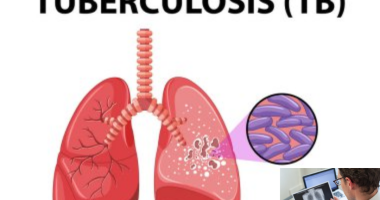The Bitter Truth: Can Type 2 Diabetes Be Reversed Sweetly?
More than half of them don’t even know they have diabetes and a higher risk of developing life-threatening complications. One in ten people lives with diabetes, which is a concern for every family. Common warning signs of complications of diabetes include blurred vision, excessive thirst, frequent urination, lack of energy, slow-healing wounds, recurring infections, and tingling or numbness.
Can Type 2 Diabetes Be Reversed?
Dr Mythri Shankar, Lead Consultant – Nuclear Medicine, Lifestyle Medicine Physician, Aster CMI Hospital, Bangalore, says that risk factors for Type II Diabetes include a family history of diabetes, unhealthy eating habits, lack of physical activity, being overweight or obese, and high blood pressure. Fasting blood sugar levels (FBS) and HBA1C levels are standard blood tests used to diagnose diabetes. But once a diagnosis of diabetes is made, does one need to take medications to control sugar levels for the rest of their life? Is it a lifelong sentence? ABSOLUTELY NOT. It can be controlled with diet and other lifestyle modifications, reducing, or eliminating medication usage (oral hypoglycemics and insulin).
Twin Cycle Hypothesis
The “twin cycle hypothesis” is a revolutionary concept that has changed the game of diabetes. It is not just the sugar that is the culprit, but also the fat. Any calorie excess due to overconsumption tends to make the pancreas moody. The accumulation of fat inside the liver and pancreas cells leads to diabetes. Too much sugar in the blood can harm the body, causing imbalances (ketoacidosis), nerve diseases (neuropathy), eye diseases (retinopathy), and kidney diseases (nephropathy). It can also lead to foot ulcers and heart disease. International organisations like the ADA (American Diabetic Association) confirm that lifestyle modifications are the best way to treat pre-diabetes and early diabetes.
Continuous Glucose Monitoring
- New technological advances like continuous glucose monitoring (CGM) have made it easier to understand the direct and immediate effects of food on our blood glucose levels by measuring them continuously (around the clock) by inserting a sensor (as a patch on the arm).
- The complex symphony of foods in the gut and blood sugar levels is still vaguely understood. But we know that the body responds well to food, and the sugar levels can be played just like a musical instrument by simply controlling the food on the plate.
- Physician-led structured programs around different phases (contemplation, preparation, action, maintenance, and relapse) are structured to handhold and help the patients in a gradual & sustainable way by which they can achieve glucose/sugar level control in a specific, measurable, attainable, relevant and time-bound way.
Health Goals
A Lifestyle Medicine Physician can help mentor/coach you in reaching your health goals in a step-by-step pattern. For example, not all millets have the same glycemic index or load. Resetting the mindset by motivational interviewing, behaviour modification can help make the right food choices and develop good healthy habits. Regular exercise and building muscle also increase the RMR (resting metabolic rate), which helps with sugar control.
- Insulin resistance (a primary cause of diabetes) can be combated well using the six pillars of lifestyle medicine (food, movement, sleep, stress, positive psychology, and avoidance of risky substances).
- Suppose your sugar levels are in the pre-diabetic or early diabetic range. In that case, you can reverse the diagnosis by turning back the clock by following a specific lifestyle medicine program that helps you control sugar levels better and faster by teaching simple and easy strategies.
- WFPB foods (whole food plant-based), which include fruits, vegetables, nuts, grains, and seeds, can do wonders. IF (intermittent fasting) can help reduce body weight or BMI.
Conclusion: Food and exercise are fundamental components of diabetes care and prevention. A lifestyle medicine program can teach people with diabetes how to eat healthily and exercise at home in simple, practical, and effective ways.
Prevention is always better than cure. But the reversal is possible when it cannot be cured.








